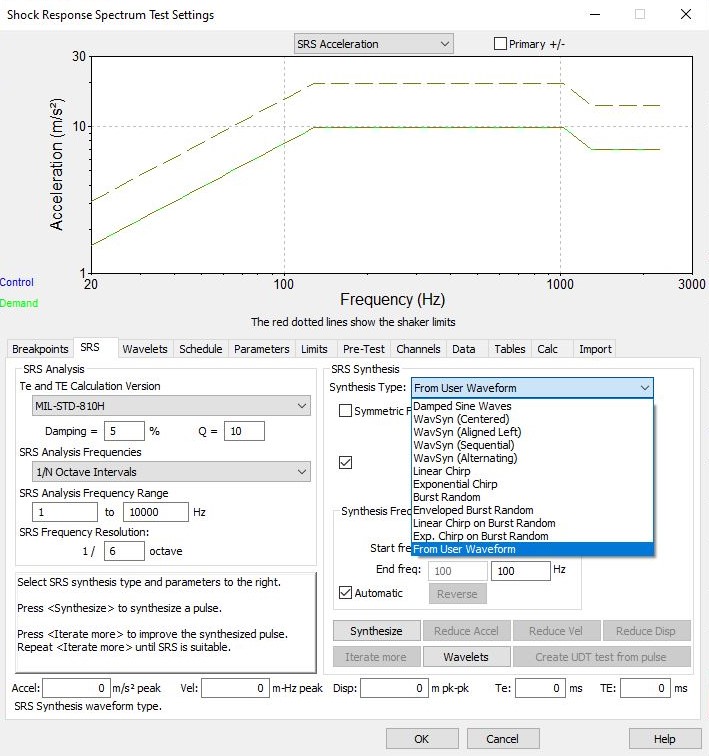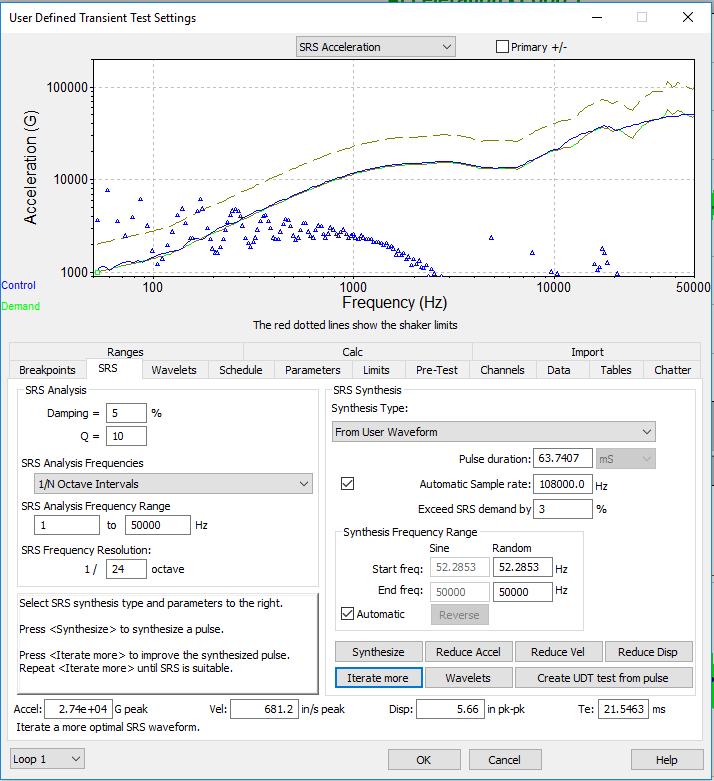Using Recorded Data to Improve SRS Tests
March 16, 2022
Back to: Test Development with Recorded Data
Various parameters go into synthesizing a pulse that is equivalent to a specified shock response spectrum (SRS). The testing industry relies on a set of standard synthetic waveforms to develop an SRS. The waveforms are based on a set of equations and use defined calculations.
Standard synthetic waveforms include:
- Linear Chirp
- Exponential Chirp
- WavSyn
- Burst Random
- Linear Chirp on Burst Random
- Exponential Chirp on Burst Random
- Enveloped Burst Random
- Damped Sine Waves
There are variations of most of these waveforms. For example, the WavSyn synthesis can be centered, aligned left, sequential, or alternating.
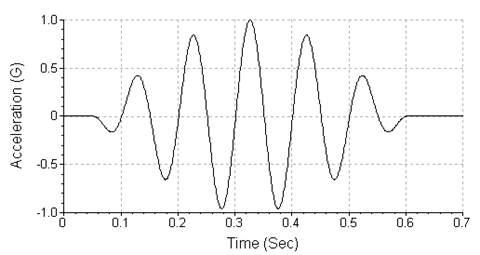
WavSyn wavelet with Frequency=10Hz, Amplitude=1G, and N=11.
Selection Process
Selecting the correct synthetic waveform type depends on the intended application. For example, WavSyn produces a short duration, high-frequency waveform well-suited for pyro shock tests. The Burst Random and Enveloped Burst Random methods produce long-duration, stationary random waveforms that are appropriate for earthquake tests.
Read: Characteristics of Synthetic SRS Waveforms.
Oftentimes, the frequency response of a synthetic pulse cannot match a transient event. To approximate an event, the synthetic waveform must test the device across the range of frequencies found in the recorded waveform.
A synthesized waveform without the correct low-frequency or high-frequency vibrations will not result in a realistic test. Furthermore, a waveform with excessive energy in a frequency range can result in over-testing.
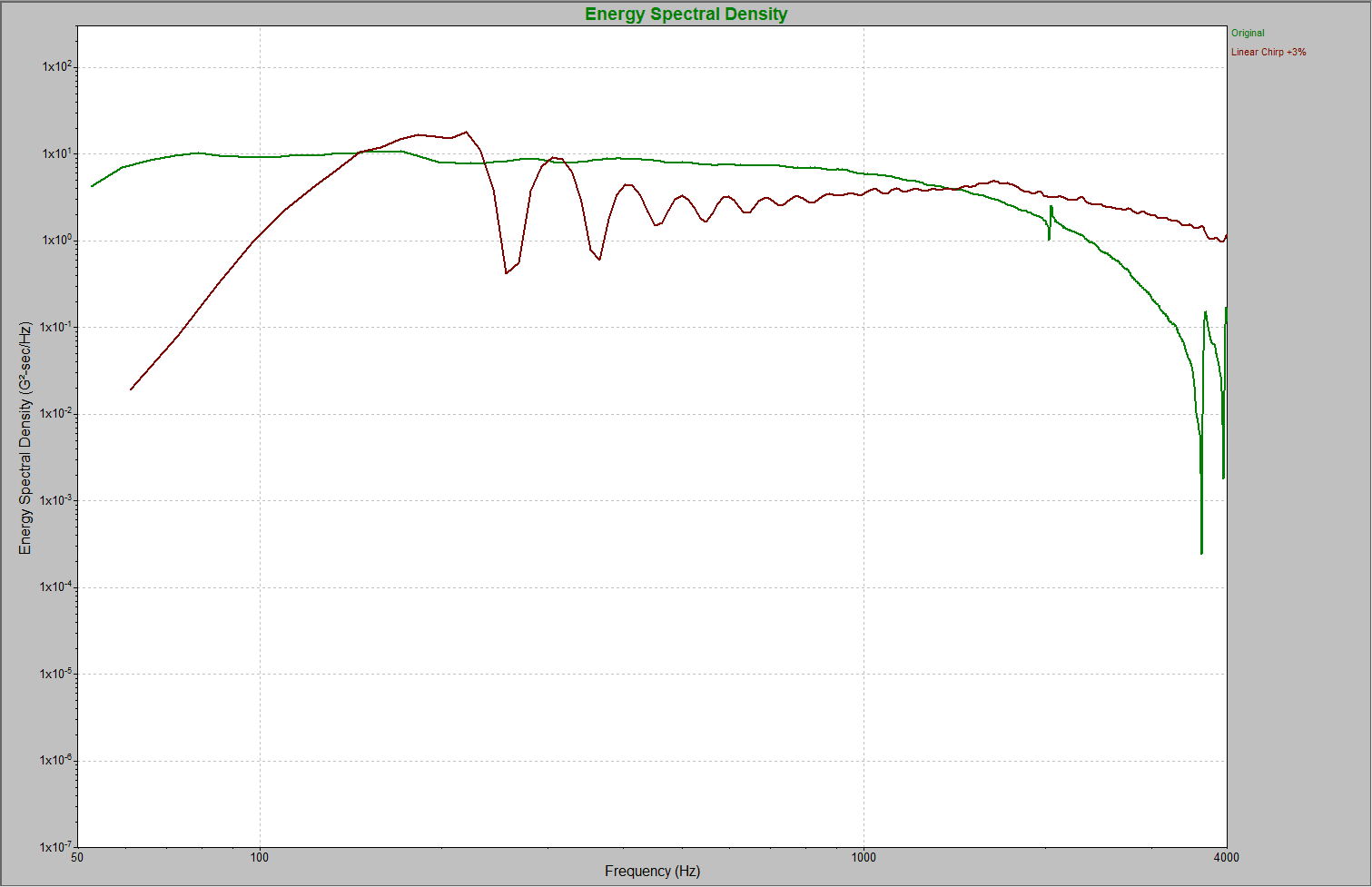
A Linear Chirp waveform overlaid on the original recording.
Using Field-Recorded Data
Using field-recorded data, a recorded waveform can be modified to meet or exceed a specified SRS. The resulting time waveform is similar to the original field environment. More importantly, the waveform frequency response is close to the original.
Creating an Enveloped Set of Recordings
A real-world data set represents a single unique event. However, using just one event as the basis for a synthesized SRS waveform gives an incomplete description of the shock vibrations that may occur. To avoid this, we can use multiple real-world data sets and combine them into one waveform.
For transient events, the correct way to combine multiple real-world data sets is to find the maximum acceleration value at each frequency (not the average). This “max enveloping” technique produces an SRS curve using the maximum acceleration value from a group of real-world data sets for each frequency.
The process of producing an enveloped SRS using the VibrationVIEW and Excel software tools is as follows:
- Load recordings: Individually load several real-world recordings of the same event into VibrationVIEW.
- Copy the data to Excel: Copy the data file for each recording in VibrationVIEW and paste it into an Excel worksheet.
- Determine the maximum of each recording at each frequency (envelope): In Excel, select the maximum acceleration value for each frequency.
Creating a Modified User Waveform
Parameters for SRS synthesis are used to create a pulse that matches a specified SRS curve. Use the following steps to produce a user-modified waveform based on enveloped recording data.
- Import a real-world data file (as .txt) to begin building a user-defined transient: Select one of the real-world recordings and import the recording’s data file as a User Defined Transient test type.
- Use the enveloped data to create a maximax breakpoint table: Select and copy the max envelope data file from the Excel worksheet and paste it into the breakpoint table section of the User Defined Transient test profile.
- Synthesize a modified user waveform: In the VibrationVIEW User Defined Transient test, click the SRS tab, select From User Waveform, and click Synthesize.
- Iterate as necessary: Clicking Iterate More adjusts the wavelets, which adjusts the SRS to create a waveform that meets or exceeds the SRS maximax breakpoint table values.
- Run the test: Save the test profile and run the test. Running the test will generate a data file for the synthesized waveform that can be compared to the real-world data.
Comparing Waveforms
The modified user waveform developed from the enveloped data and the standard synthesized waveforms can be evaluated by comparing them with a recorded waveform.
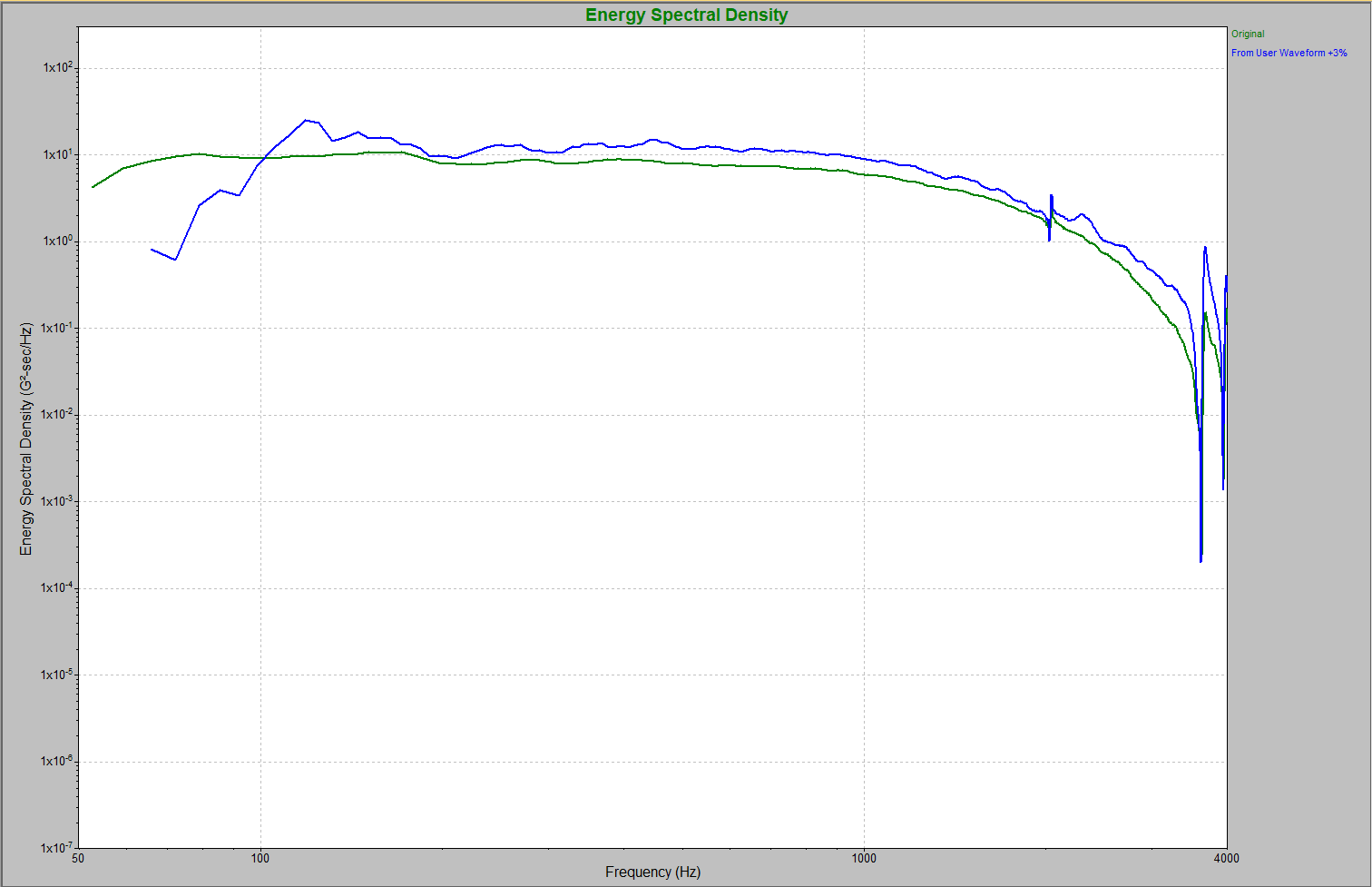
Modified user waveform overlaid on the original recording.
Waveform shape should first be considered. A mechanical shock test must test the DUT at the correct amplitudes across the frequency domain to be realistic.
Frequency content is also telling, as a useful synthetic waveform must test a DUT across the same range of frequencies found in the real-world waveform. A synthesized waveform test without the low-frequency or high-frequency vibrations will not result in a realistic test.
Lastly, test engineers should consider the energy or amplitude of the waveforms. In addition to the correct waveform shape and frequency content, a realistic test must also have the same amplitude as the real-world waveform.
Conclusion
A modified user waveform generated with the max enveloping technique yields an SRS waveform close to the original real-world waveform in terms of waveform shape, frequency content, and amplitude.
Standard synthetic waveforms often do not match real-world transient events. They are generated with mathematical algorithms and cannot match the realistic qualities of a modified user waveform.
Based on an enveloped set of real-world recordings, the modified user waveform maintains real-world characteristics and creates an SRS waveform that accurately reflects those recorded events.

